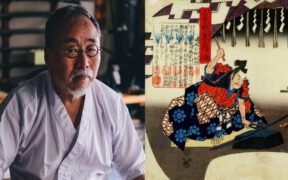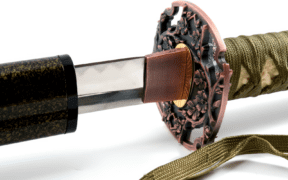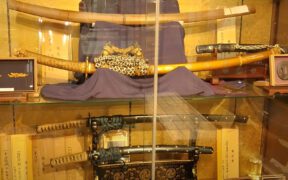What Makes Kogai a Work of Art and a Collector’s Item?
NO AI USED This Article has been written and edited by our team with no help of the AI
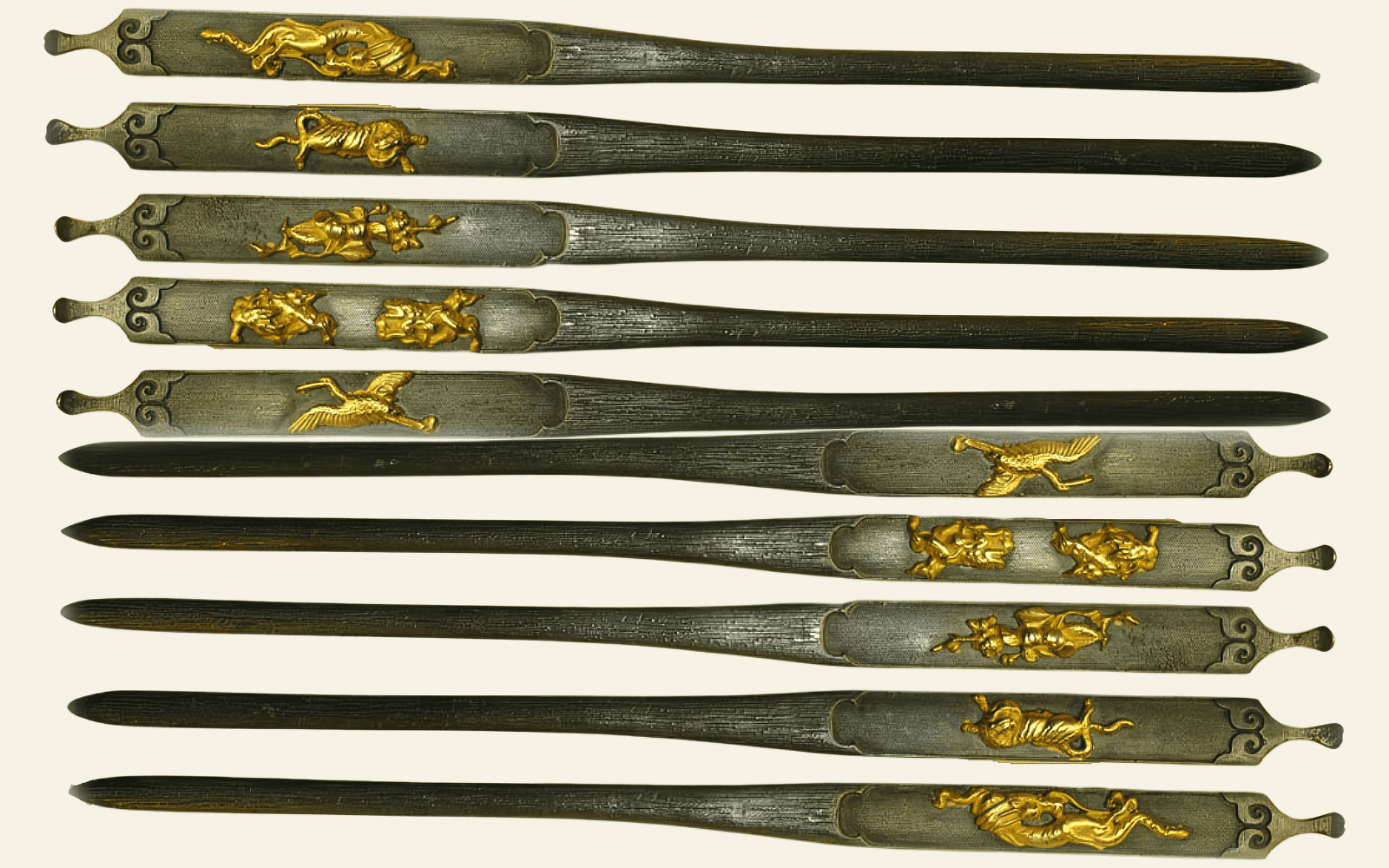
The kogai, traditionally recognized as a hairdressing tool, is an elegant implement carried in the scabbard of a Japanese sword or dagger. Many kogai boast exquisite craftsmanship, showcasing the sophisticated metalworking techniques that demonstrate the skill of their artisans. Beyond their practical and ornamental functions, kogai served as symbols of status and wealth for their owners.
Let’s delve into the unique design of kogai, examine the artistry behind their creation, and explore some terminologies that collectors use to describe these remarkable pieces.
Anatomy and Terminology of a Kogai
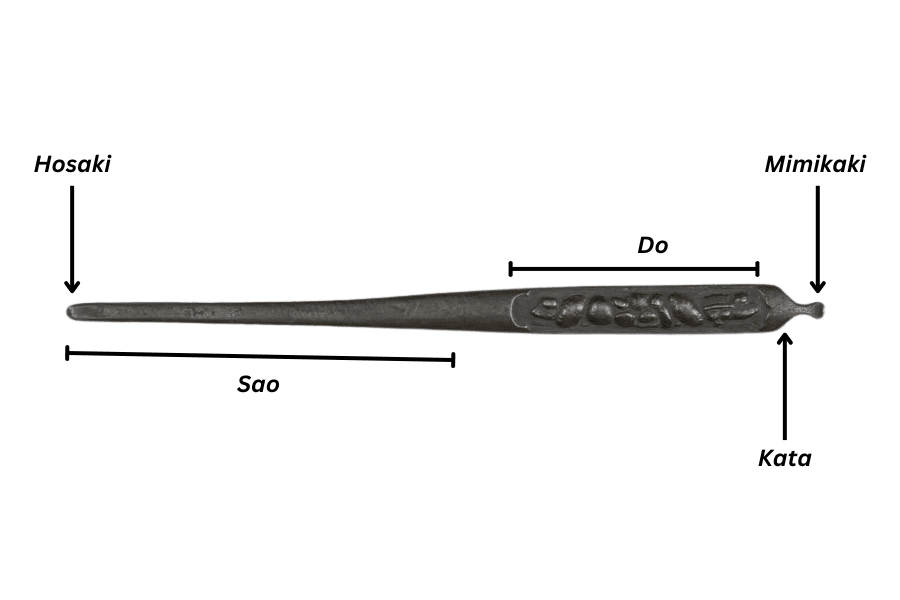
Kogai (笄) literally means sword-needle, a reference to its long, slender shape. It is believed that the kogai served as a hairpin or hairdressing tool used by men to groom their hair and topknot. When the samurai wore armor, they used it to arrange the hair before putting on or after removing the helmet. It continued to be used even when armor was seldom worn, usually for sticking loose hair back under the eboshi headgear.
Here are the essential parts of a kogai:
- Mimikaki (耳掻) – The spoon-shaped end on the top of the grip. The term mimikaki literally means ear scratcher, and it was probably used to clean the ears.
- Kata – The shoulder of a kogai.
- Do (胴) – The grip section of a kogai.
- Ji-Ita – A separate decorative plate set in the grip of a kogai. More often, it was the only part crafted by masters, and the rest was done by apprentices. Sometimes, the ji-ita was taken from a kogai and set in a kozuka (utility knife handle).
- Sao (竿 or 棹) – The needle part of the kogai.
- Hosaki – The blunted tip or point of a kogai. Old records suggest that the tip of a kogai was used for reaching through the openings in the armor to scratch itches or scratching on hot days underneath the headgear.
How Kogai Is Mounted on the Sword’s Scabbard
A kogai is typically found on the scabbards of wakizashi and tanto, but it is rarely seen on katana. Designed to match the kozuka (the handle of a utility knife), both are often carried in the scabbard’s pockets. It is believed that a koshigatana, featuring aikuchi-style mounting (which lacks a sword guard), originally included a kogai in the slot of the scabbard.
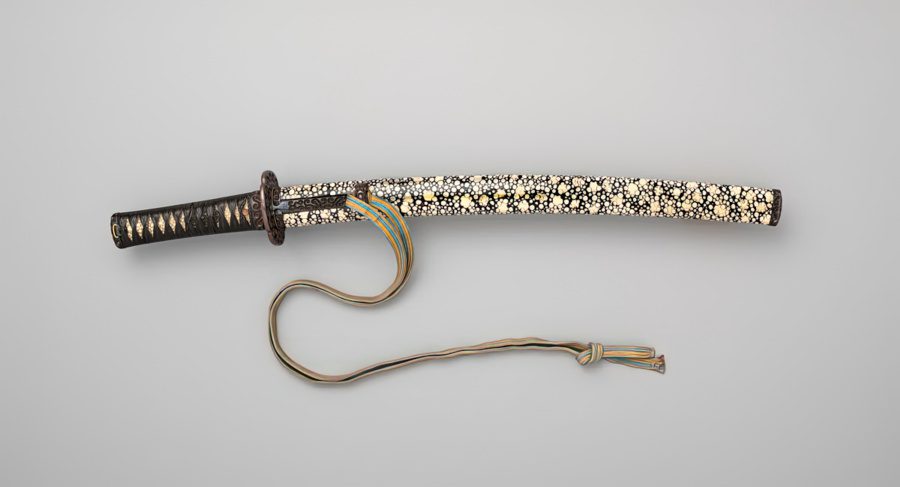
The saya (scabbard) of some Japanese swords and daggers feature small pockets (hitsu) on the upper part for the kogai and kozuka (handle of a small utility knife). A kogai fits into a slot on one side of a scabbard, and a kozuka would be found on the opposite side.
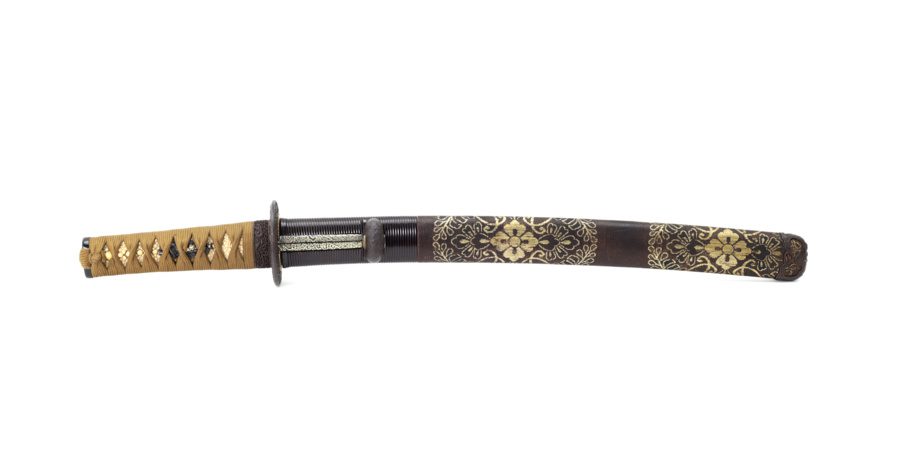
The tsuba (sword guard) features small side openings, letting through these fittings without drawing the sword. The opening on a tsuba for the kogai is called kogai-hitsu-ana (笄櫃孔), which is always on the right side. The handle of the kogai protrudes through the sword guard.
Understanding Collector Terminology Related to Kogai
In the realm of Japanese sword collecting, enthusiasts use specific terminology to describe these exceptional items. Below are some key terms related to kogai.
1. A kogai that forms a pair of chopsticks is called wari-kogai.
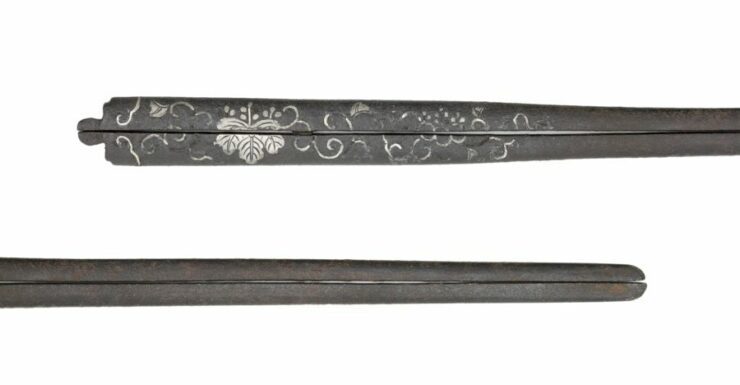
A type of the kogai is the wari-kogai (割笄), which separates into two, forming a pair of chopsticks. It usually features a mortise-and-tenon joint to hold the halves together when placed in the scabbard. The wari-kōgai was popular from the Edo period onwards.
Some speculate that the wari-kogai and the utility knife kogatana were likely used as portable chopsticks during a campaign. However, some experts suggest that it was not used as chopsticks for eating but as ceremonial tweezers for handling incense.
2. A matched pair of a kogai and kozuka is referred to as futatokoromono.
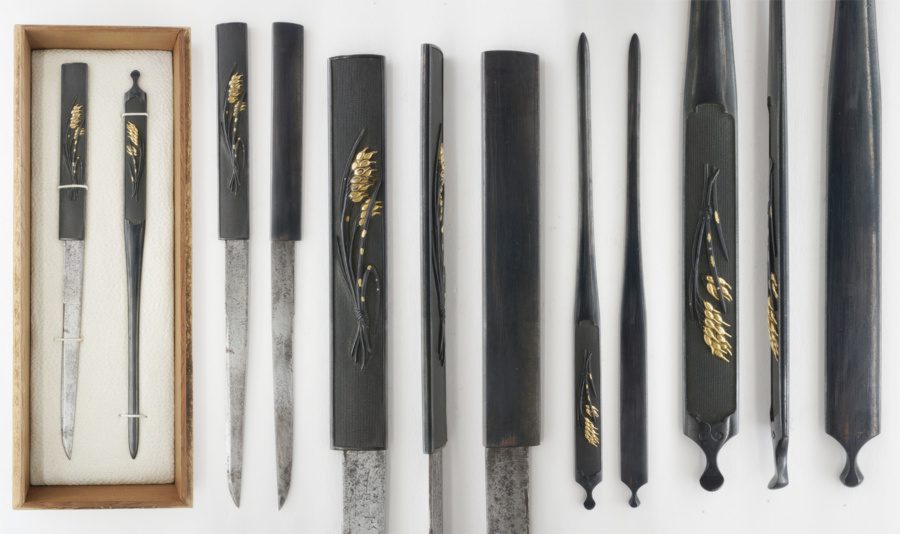
The kogai and kozuka were often incorporated into the fittings of a Japanese sword and are collectively called futatokoromono (ニ所物). A kozuka, meaning small hilt, refers to the handle of a small knife kogatana, though sometimes the term is applied to the whole knife. Both were kept in slots on the scabbard, often made in matching designs. Also, some kogai have been reworked into kozuka and are called kogai-naoshi.
3. A matching set of kogai, kozuka, and menuki is called mitokoromono.

The term mitokoromono (三所物) literally means things of three places. The mitokoromono set consists of three ornamental sword fittings: kogai, kozuka (hilt of a small utility knife), and a pair of menuki (grip ornaments). The menuki ornaments are placed under the hilt wrapping on either side of the grip.
4. A set of four sword fittings is called yotokoromono.
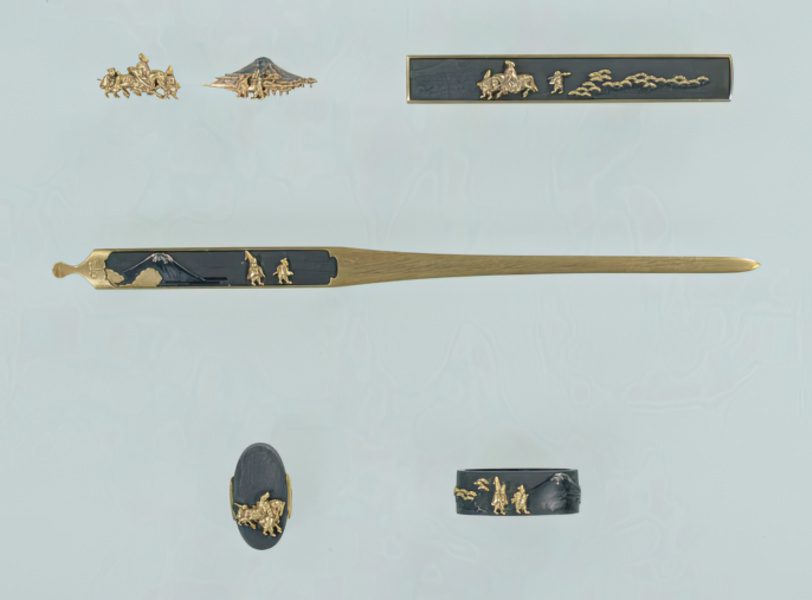
A yotokoromono consists of a mitokoromono, a fuchi (metal collar), and a kashira (pommel cap)–collectively called fuchigashira. The Goto family, specializing in mitokoromono, also made a few fuchigashira sets. On the other hand, the set of seven is called nanatokoromono—comprising a kogai, kozuka, menuki, fuchigashira, kurigata, kojiri, and kaerizuno.
5. Kogai designs influenced by foreign styles are known as nanban.
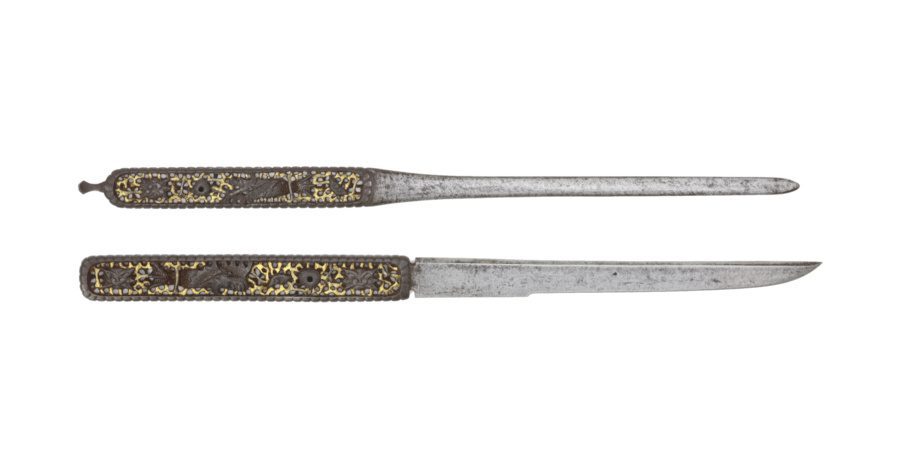
Japanese sword mountings, including kogai, that show a hint of foreign influence are widely called Nanban, meaning Southern barbarian style. Some styles were of Kanton style—inspired by Chinese sword guards from Beijing royal workshops—which were traded through the port of Kanton to Japan. Eventually, Japanese artisans copied the Chinese design into their works.
Exploring the Unique Features of Kogai
Kogai, like other ornamental fittings for Japanese swords, showcase the exceptional artistry and craftsmanship of traditional Japanese metalwork.
Materials and Construction of Kogai
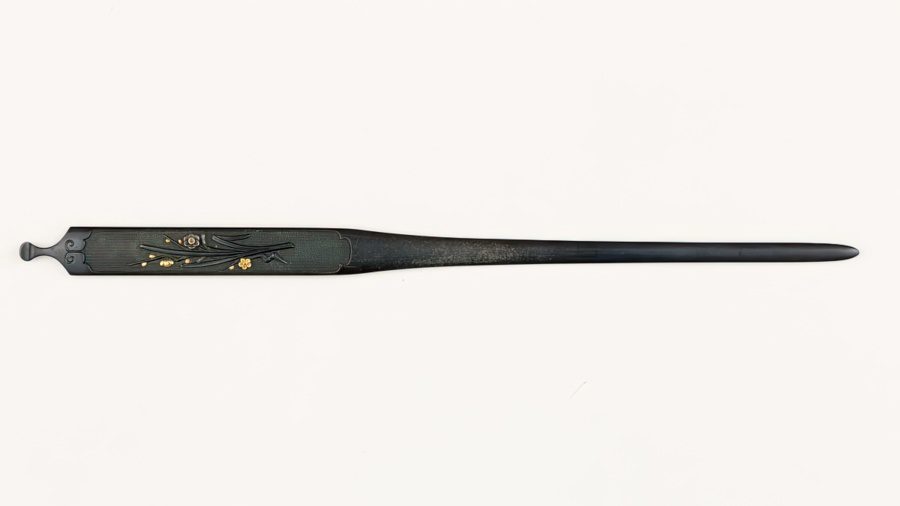
Early kogai were made from yamagane (raw, unrefined copper), which appeared subtle and plain and varied in color. By the Edo period, many kogai were crafted from shakudo, an alloy of gold and copper that was chemically patinated to a dark blue-black hue. Artisans also experimented with different metal combinations, such as gold, silver, and copper, to create colorful sword fittings.
Craftsmanship and Design of Kogai
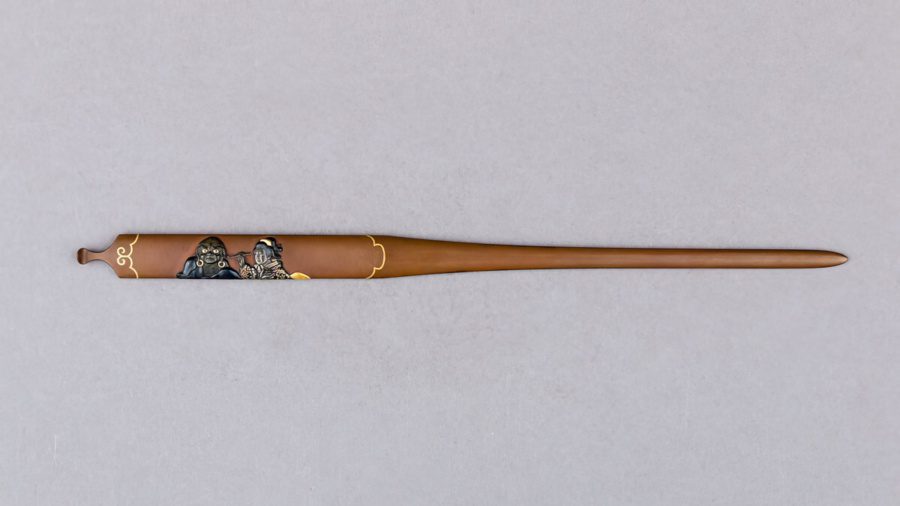
Japanese metalwork often incorporates materials like gold, silver, and copper, with techniques such as carving, engraving, and inlaying. These same techniques are also applied to kogai and other sword fittings. Some kogai were adorned with gold foil and featured official family crests or heraldic insignia.

